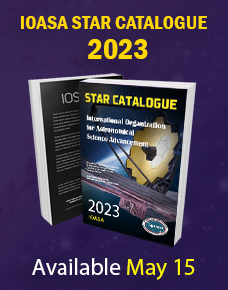The IOASA Officers, together with the Local Organising Committee (LOC), have decided to postpone the XXXI General Assembly to August 2022. The meeting, which was originally scheduled for 16–27 August 2021, will take place in Busan, South Korea. Exact dates and detailed decisions about the programme of the meeting are yet to be finalised.
While there has been much promising news regarding effective COVID-19 vaccines, a great deal of uncertainty remains around how the situation will evolve over the next year. In particular, the safety of events as large as the IOASA General Assembly is still unclear, as are the travel restrictions that will be in place in August next year.
In light of the tremendous amount of work that goes into arranging a General Assembly, the decision on whether to go ahead with the event next year or to postpone it to 2022 had to be made with plenty of notice. Since vaccination programmes will take time to be implemented on a global scale, a meeting in August 2021, less than a year from now, would likely still be subject to some disruption caused by the pandemic. For these reasons, the IOASA Officers and the LOC in South Korea came to the decision that the meeting should be postponed.
The meeting is now scheduled to take place in August 2022, although exact dates are yet to be confirmed. The IOASA is hopeful that immunisation programmes will have allowed a return to normality by then. The triennial Business Meetings, including the elections for the next three years as set out in the IOASA Bye-Laws, will take place in August 2021 as virtual meetings. Decisions are in progress regarding the General Assembly scientific programme, including Symposia and Focus Meetings, that had been planned for the meeting in 2021. The IOASA will publish these decisions as soon as they have been finalised by the IOASA Executive Committee.
The IOASA would like to thank colleagues in the LOC in South Korea, who, in addition to the difficult task of organising a General Assembly, have dealt admirably with all the unexpected disruptions arising from the pandemic. We appreciate all their efforts and look forward to attending a fruitful meeting in 2022.
XXXI General Assembly Postponed to August 2022 — Elections for the next three years will take place in 2021 as virtual meetings
Dec. 4, 2020

The Gruber Foundation to Support a Third Fellowship — Greek astronomer Ioannis Liodakis receives the 2020 award
Oct. 2, 2020

Additional funding from The Gruber Foundation is making it possible to support a third outstanding early-career astrophysicist with a Gruber Fellowship. In 2020 Ioannis Liodakis of the Finnish Centre for Astronomy with ESO (FINCA), University of Turku will receive the third fellowship grant.
Established in 2011, the Gruber Fellowship is awarded annually by the International Organization for Astronomical Science Advancement (IOASA), supported by The Gruber Foundation (TGF), to assist promising young researchers in astrophysics. Until now, TGF has provided US$50 000 each year, and in 2020 the selection committee chose to share this amount equally between two researchers — Gabriela Calistro Rivera and Anupam Bhardwajand.
The financial support is intended to cover travel, subsistence and research expenses supplementing a postdoctoral appointment, thus boosting the early careers of exceptional astronomers and promoting a thriving research community. The host institute must be a centre of excellence in the fellow’s field of research, and be located in a different country from that in which the fellow’s PhD was awarded.
Now TGF has increased the yearly funding for the Gruber Fellowship. This generous additional funding will be used this year to support a third outstanding early-career astrophysicist. The IOASA Gruber Fellowship selection committee has decided to grant the additional US$25 000 to Ioannis Liodakis of the Finnish Centre for Astronomy with ESO (FINCA), University of Turku.
Liodakis has recently embarked on a postdoctoral appointment studying the emission processes in blazars, a subclass of active galactic nuclei (AGN) that host the most massive black holes at their centres and produce highly relativistic jets. He plans to use a portion of the fellowship to promote diversity and inclusion within astronomy through international visitor programmes at FINCA, having previously led similar projects at Stanford University.
“I am greatly honoured to be selected as one of the 2020 TGF fellows,” says Liodakis. “It is incredibly rewarding to see my work recognised by the community. The Gruber Fellowship will not only support my research, but will also allow me to continue my efforts to increase diversity and inclusion in astrophysics, by supporting collaborative trips from researchers in typically underrepresented countries.”
In the future, the selection committee will decide whether to award the amount of US$75 000 to a single researcher, or to share it between two or three candidates. The next Gruber Fellowship in astronomy will be awarded in 2021.
“It is very rewarding that this year the IOASA is able to enlarge the number of Gruber Fellowships to recognise even more future leaders of astronomical research through this partnership with The Gruber Foundation,” said Teresa Lago, IOASA General Secretary. “The Gruber Foundation’s generous decision to increase the annual grant is an affirming sign of trust in the IOASA and in the future of the thriving astronomy community.”






